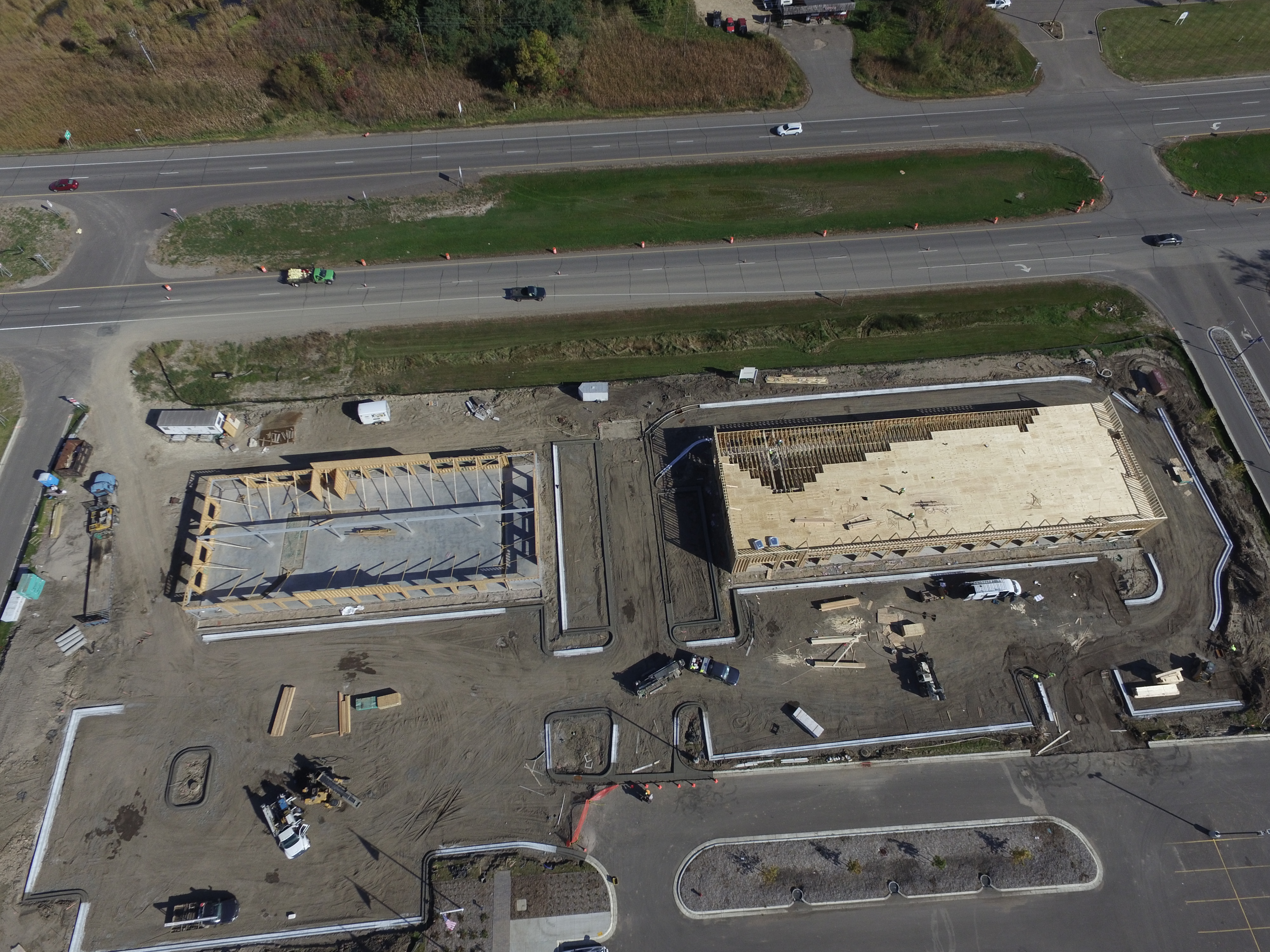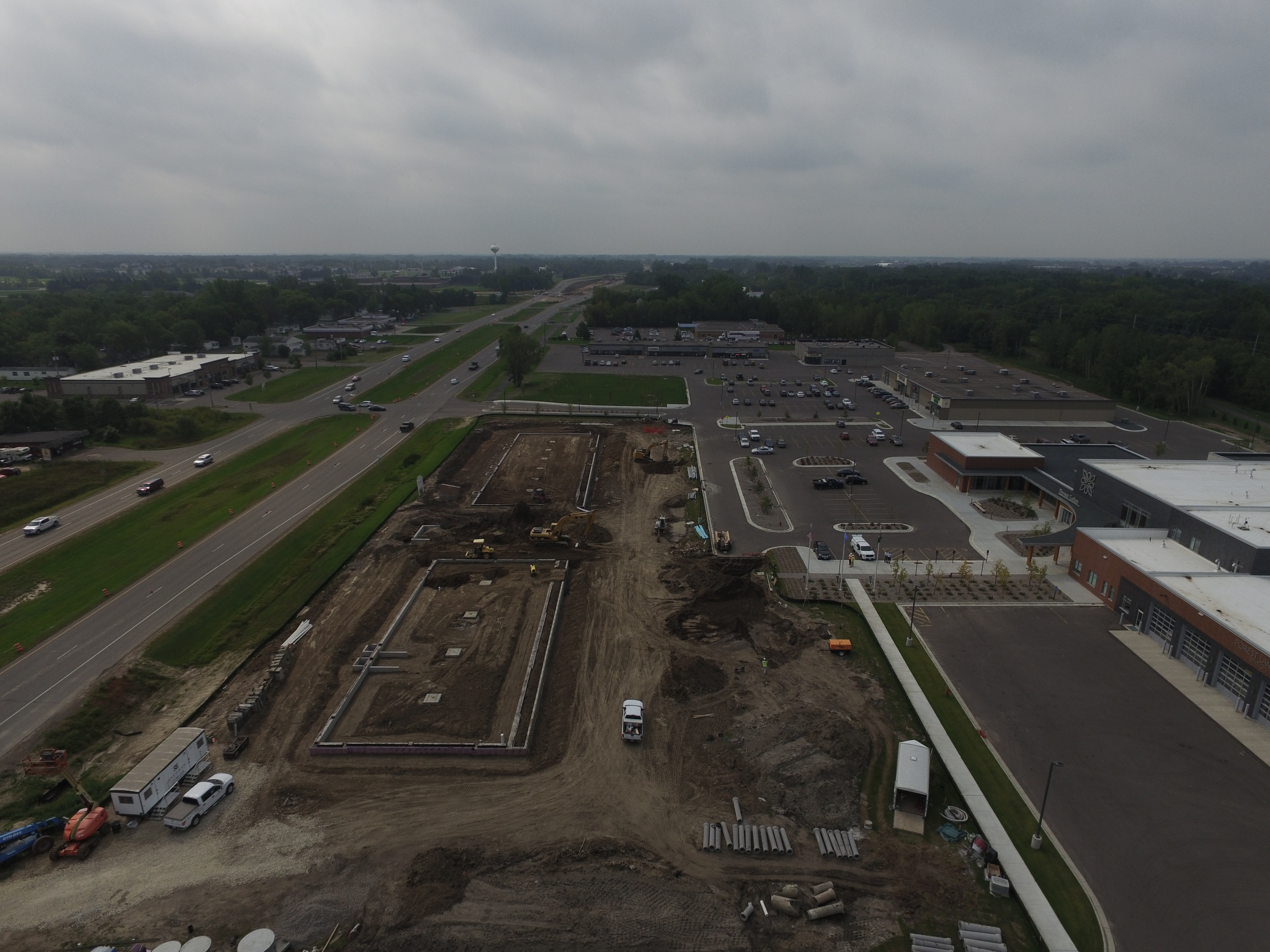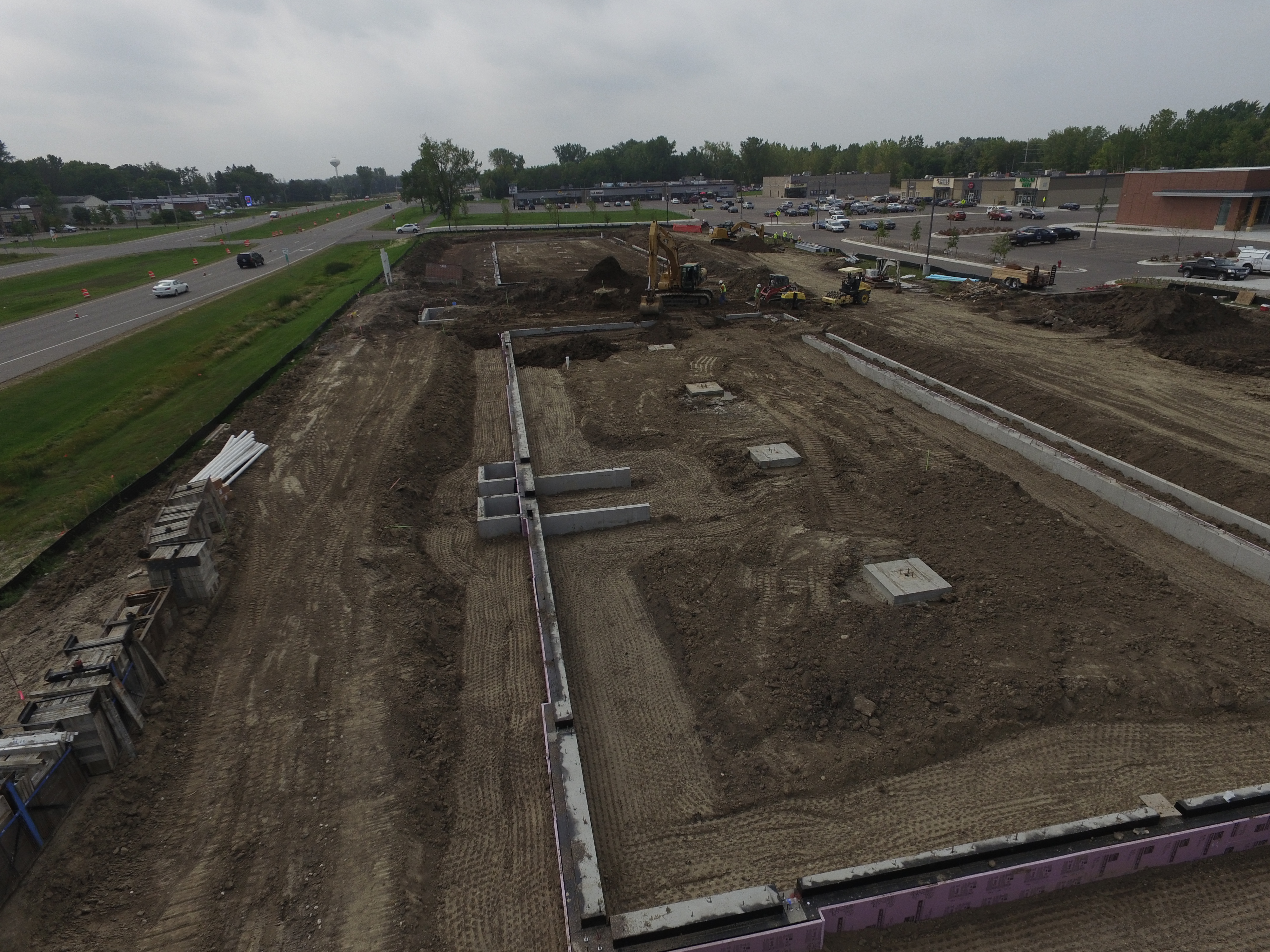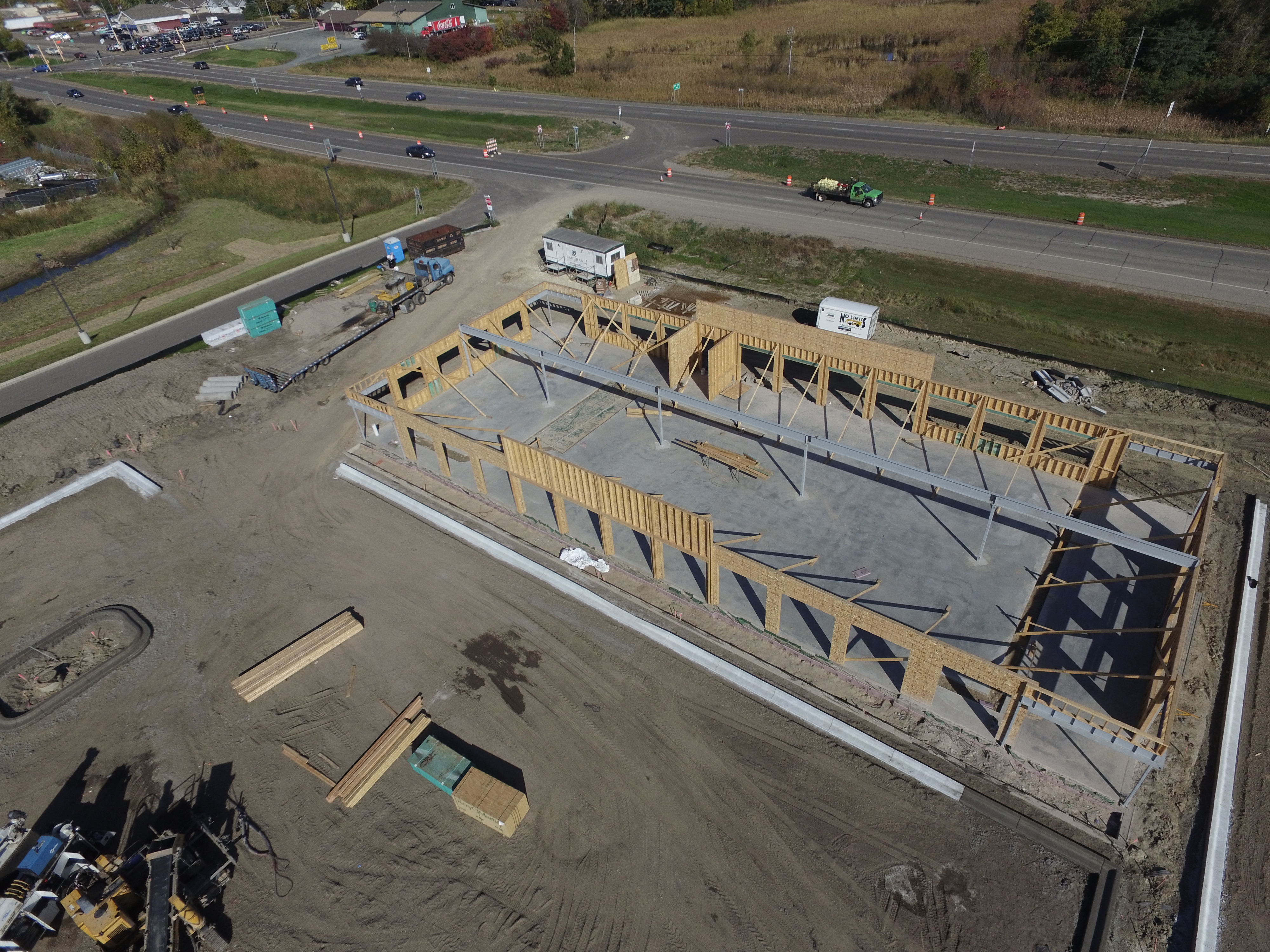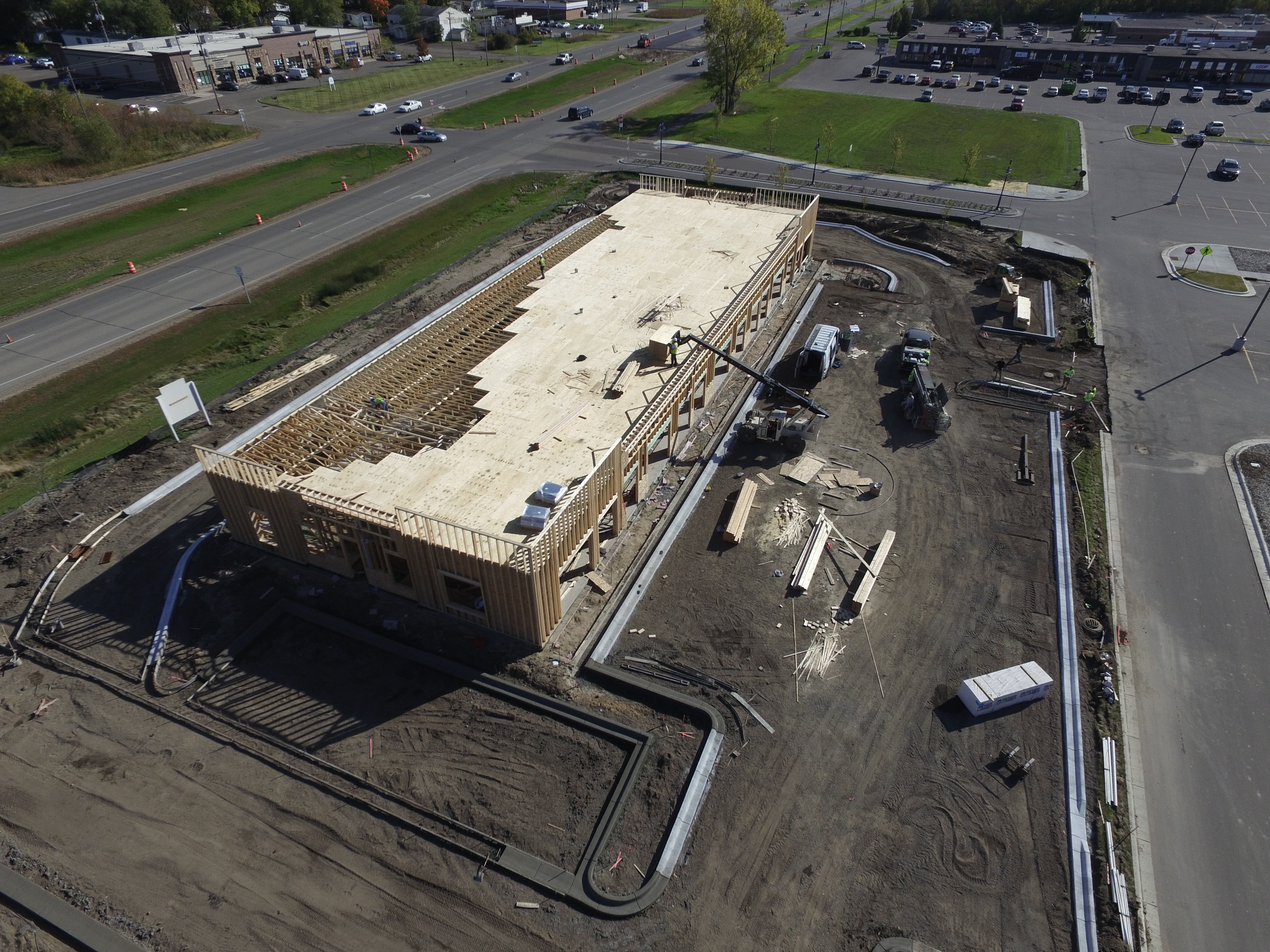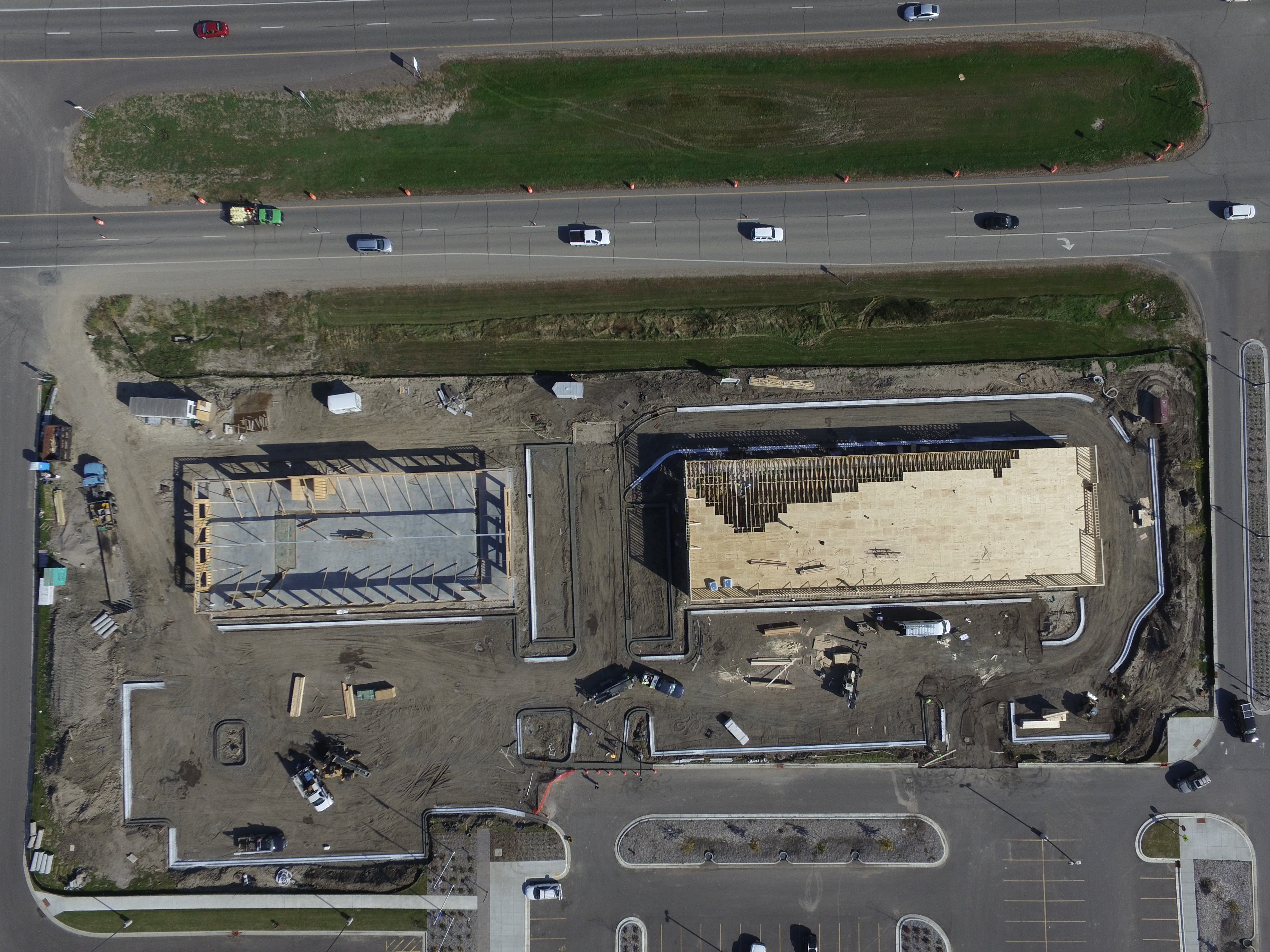A Day in the Life of a General Contractor
The day starts early for a general contractor. He or she is up before the sun and plans out a schedule for the day. After checking email and grabbing paperwork, he or she is out the door and running.
The typical first stop of the day is the construction site. There the general contractor will meet with the subcontractors and review the progress that they have made since his or her last visit.
The general contractor has already hired several subcontractors through a bidding process. Once a subcontractor is selected, plans and specifications are reviewed to value engineer the project. This ensures the client will receive the best materials and equipment to meet any current and future needs. The general contractor needs to pay particular attention to the project budget during this process.
While the general contractor has several construction sites to manage at once and will be driving all around town, the subcontractors will generally stay on site to supervise their team of workers. Subcontractors typically include carpenters, electricians, plumbers and others.
It is the responsibility of the general contractor and the subcontractors to ensure that the work performed is in accordance with the plans and specifications while following state laws and local building codes. It is also everyone’s responsibility that all work is performed in a safe manor adhering to applicable safety regulations.
After finishing the meeting with the subcontractors, the general contractor may proceed to a mid-morning pre-bid meeting. There he or she will find architects and engineers who have been selected to design new buildings envisioned by a commercial real estate developer.
This commercial real estate developer could be working for the government or a private entity, but he or she has been tasked with building or redesigning an area for future use. He or she has already met with an architect and engineer in order to communicate the ideas of the design.
The architect has spent time preparing plans and specifications and consulting with engineers to make sure that the building design is feasible and follows building codes.
When the general contractor arrives at this meeting, he or she may see other contractors there. They may be gathering there to get information on new developments coming to the area. After having the opportunity to hear about the new project, inspect the site and acquire the plans and specifications, the general contractor will return to the office and begin working on a bid.
The commercial real estate developer or the client will choose the best value bid and award the building rights to that general contractor. Often, the best value bid is not based solely on price but will include other considerations, such as general contractor past experience and project team. The bid usually details the price of labor and materials for the project. Some general contractors take their fee as a percentage of the total building cost. Others may charge a flat fee after considering the project.
When the general contractor returns to the office, he or she has a meeting with his or her assistants to determine the scope of work for the project and what subcontractors need to be contacted to obtain bids. The assistants will then contact subcontractors required for the project to discuss their specific portion of work.
Finally, at the end of the day, the general contractor will make phone calls, order new supplies, interview new subcontractors for upcoming jobs, approve invoices for payment, and review the progress of the bid he or she left the team in charge of.
As the sun is starting to set, the general contractor grabs his or her paperwork and heads for home. Another long but successful day is in the books, and he or she is excited to see the new developments coming to life within the community.
Reducing Waste at the Construction Site
In a recent article on the Demetree Real Estate blog, construction manager Wallace Dostal explained four ways that waste at a construction site can be reduced. Currently, the construction industry produces one-third of landfill waste, according to Dostal. He stresses that planning ahead and putting waste management practices into place will reduce the effect that the industry has on waste production.
We at Gaughan Companies are encouraged by Dostal’s insistence that the waste produced from a construction site can be reduced. We hope that more construction companies will put these practices into place.
You can read more here on the Demetree Real Estate blog.
Why Manufacturing Growth Affects Everyone
According to studies compiled by Markit Economics, U.S. manufacturing is down for the months of August and September. The recent news of Brexit and the fact that China has reached a slump in their economy is causing slower manufacturing and spending around the world. The U.S. is only at a two percent growth rate for the year.
Minimum wage earnings are down for Americans compared with where they were about fifteen years ago, and the hiring trends by companies have also slowed. If Americans can’t spend, the economy can’t grow.
Economists have estimated that the average age that it takes to double the standard of living for the average American is now up to about seventy years. This inability to change one’s circumstances within a short amount of time has led to the baby boomers not having enough to retire on, so a lot of them go back to work. However, due to their age, they are usually stuck in dead end jobs that pay very little.
Young people who would ordinarily be graduating college, then landing that first job, buying that first home, and starting their family, are now moving back into their parents’ basements in droves. If they are lucky enough to land a great job, they are not getting great offers that the grads of twenty years ago did. In addition, the Federal Reserve is starting to increase interest rates, which makes it harder to purchase homes and automobiles.
There are several things in development here in the U.S. that are also causing our economy to be sluggish in growth. It doesn’t help that the unrest and attacks overseas have caused Americans to think twice or pause for longer periods of time before booking long awaited vacations to foreign countries. So the travel and tourism industries are suffering. In turn, those countries that might ordinarily have great products or services to export, may be suffering from a lack of workers and facilities because of war and civil unrest.
It also doesn’t help that we are all waiting on the results of the Presidential Election. The fiscal policies, public investment and structural reform that the new President will put into place will greatly affect our economy and cause ripple effects around the world.
The U.S. manufacturing companies are watching all of this unfold around them. With the advancement of the ease of deliveries, many Americans are using their purchasing power to order from overseas companies who are marketing cheap products and sometimes lesser quality to Americans who want to get the most for their dollar.
This in turn affects local suppliers who have slowed in their production times because the orders are not coming in. Many of them prefer to make items in bulk quantities, so they are hesitant to fire up the assembly lines and employ workers who many not have much to work on. The U.S. manufacturers are also hesitant to have a lot of inventory laying around, especially those who work in food services, because they know there is a shelf life to their product. They don’t want to have it still sitting in their warehouse when it’s close to expiration.
The U.S. dollar is strong right now too, and even though some countries are catering to Americans, others can’t afford to. This lessens the global demand for U.S. goods and services. However, it is estimated that nearly half of all U.S exports go to countries that we have free trade agreements with. Also, when the U.S. plants do fire up their assembly lines, it is estimated that they use about thirty percent of the nation’s energy supply in order to run their operation. So, that is good for the energy industry.
No one knows what the answer is to get the world economy moving again. Several theories have been tried and discarded. The only thing that seems to make sense is for industry leaders to invest in better training for their employees, study the competition abroad, increase funding for STEM related fields, and find ways to make great products at affordable prices.
Top Ten Commercial Real Estate Trends
2016 is showing great promise in both updating commercial real estate trends, and adding new ones. The following are things to watch for this year:
1. Overseas Investment into U.S. Commercial Real Estate
The U.S. property market is among the most stable and transparent in the world. With growth slowing in Europe and China, foreign investors are flocking to back U.S. projects. According to the Commercial Real Estate Development Association, $91.1 billion was spent by overseas investors on U.S. transactions in 2015. That accounts for 17 percent of all deals. Most of the investors are from Canada. Since that country is lacking in dense populations and has limited resource investment, their citizens’ view the U.S. as a lucrative way to leverage their buying power.
2. Global Urbanization and Its Reverse
Millennials and Baby Boomers have something in common. They both want to seek out living space in metro areas. As they move away from the suburbs, they are looking for affordable units to rent or purchase. In addition, they need to find places to buy their groceries, get some exercise, and shop for household items and apparel.
Generation X and Millennials with children, however, are either staying in or moving to the suburbs. Promises of more house for the money, large green lawns and local parks and playgrounds are drawing them out. Once they relocate to the suburbs, they also need to get groceries, find places to exercise, and shop for household items and apparel.
Commercial real estate has an edge in both urban and suburban areas as builders try to meet the demands of bringing grocery stores, parks, gyms, recreation sites, and houses of worship, coffee shops, bookstores, and more to the market.
3. New Commercial Construction will be More Limited
Building new multi-family dwellings is diminishing. However, the need for senior and student housing is increasing. As these demographics look for affordable housing, they are considering new options such as the tiny house movement. In addition, cities are taking old abandoned big box stores and malls and are re-purposing them for uses that better fit this day and age. Gyms, recreation facilities, and even government offices now sit where old eyesores used to reside. The city leaders realize that often it’s much more cost-effective to remodel an existing structure, rather than invest in new construction.
4. Tearing Down Parking Lots and Garages
As metro consumers get used to using mass transit, more and more of them are ditching their autos and relying on goods and services that can be obtained through delivery or by walking directly to the retailers. They seek communities that are made up of mixed use dwellings, such as having a retailer on the bottom floor, and housing on the top floors. In addition, green space has become very important for city dwellers. They want a place to play with their kids, walk the dog, bicycle and roller skate. Since land space is limited, parking lots and garages are often torn down in order to make room for more buildings.
5. Increasing Stress on Retailers
The average consumer is having to pay more these days to use their credit card, and merchant processing fees are higher too. Reports suggest that on-line sales have triumphed over in-person sales, especially around Thanksgiving weekend. In order to combat this trend, retailers will have to create virtual shopping that combines with physical shopping. Major retailers are already being threatened by discount stores that carry quality, off-brand merchandise. Almost monthly, we hear about large companies such as Macy’s, K-Mart, and JC Penney that are closing stores. However, it seems that chain restaurants are expanding. Commercial real estate experts need to move quickly to fill those properties that have been abandoned.
6. Rising Interest Rates
If the Federal Reserve continues to raise the interest rates, the market will become more stable. However, it will also rule out the small business person who has dreamed of opening a small brick and mortar store. According to the Small Business Administration, small business owners own or lease between 30 and 50 percent of all commercial real estate space in the U.S. However, if these entrepreneurs and franchises can’t afford the rent, these properties will remain vacant.
7. Drop in Energy Prices
The price of oil has dropped several times this year. This draws consumers out of their homes, and encourages them to travel. Hotels, restaurants, attractions and city tourism benefit because they are hosting more guests. As for running businesses, consumers are seeing more profit in part, because their heating and air conditioning bills are dropping. This gives additional buying power, and they tend to want to go out to enjoy their surroundings more. This affects commercial real estate experts because they need to be sensitive to those establishments that are ready to add on to their existing properties.
8. Changes in Office Landscape
Americans are seeing change come to their workplace. Several companies support telecommuting. Others support desk-sharing. It seems that the bigger companies such as AT&T are doing away with the cubicles of yesterday, and are instead embracing a collaborative work space environment. Huddle rooms, quad shaped desk rounds that hold 4-5 workers, and a lack of dividing walls and walkways have become the norm. Commercial developers are watching this new trend, and need to be quick to respond with proposals for interior remodeling.
9. The Introduction of LEED
Along with the new trends in the workplace environment, companies are embracing “going green.” They are installing energy efficient thermostats, and water savings devices that will cut down on their carbon footprint. They are also trying to continue to go paperless and rely on a digital environment.
LEED stands for Leadership in Energy and Environmental Design. It uses 3rd party verification to verify that a building is “green.” In addition, companies are installing green space inside of buildings, and planting vegetation. Commercial real estate companies need to understand this trend and be ready to respond with sub-contractors that are knowledgeable in these fields.
10. The Advancement of the Internet of Things
Pretty soon, getting to the office, turning on the lights and heating up the coffee maker will be things of the past. With the internet of things, more and more “smart buildings” are being created. Special wiring will interface with digital technology to make the life of the consumer even easier. A worker will be able to turn on the lights in the office, start the coffee maker, and pan the security cameras from the comfort of his home. If he does decide to go into the office, he can remote in to his kid’s daycare, start the oven or the crock-pot at his home, and start his car, all from the touch of button.
As commercial real estate companies continue to study this trend, they need to be able to respond by having sub-contractors who are well versed in creating apps that allow building managers to remotely control the building resources and respond to requests to restock or send janitorial services on demand.
The world and its resources are changing around us every day. We, as commercial real estate industry professionals, along with our partners, are developing plans to meet and stay ahead of these trends and demands. We aspire to be the new leaders on the information superhighway and community advancements of tomorrow.
Gaughan Completes Phase Two of City Center Commons
Gaughan Companies announces the completion of its latest development project called City Center Commons, located along highway 61 on the south side of Forest Lake. The new commercial buildings provide a clean, modern look and feel to the community.
The building will occupy several tenants including Keller Williams in one building, along with Thrifty White and Maplewood Oral Surgery in the second building. There is one additional space available for custom build-out which has the potential for a new franchise restaurant.
“We’re adding residential rooftops to the Minneapolis suburbs again and demand for more commercial and retail space is imminent based on the region’s population growth,” said Patrick Gaughan, in reference to the return of growth in the economy after a post-recession lull.
Gaughan Construction continues to embrace the growth of the economy and the future of the company.
Minnesota Construction Industry on the Rise?
In April of 2016, Minnesota added 7,400 employment opportunities with great thanks to the development and construction industries. Statistics indicate a solid increase in development projects throughout Minnesota over the past several months. The construction industry is currently booming with this month having the largest increase in production within the past 25 years. These factors attribute to Minnesota’s lowering unemployment rate which is now approximately 3.7%, and a 1.7% increase in job growth over the past year. Specifically in the Minneapolis and St. Paul region, employment growth increased by 1.8%. These trends help to provide a positive outlook for what the future of construction may hold.
U.S. Bank Stadium Complete
Vikings fans unite in celebration of the completion of the U.S. Bank Stadium! On June 17th, 2016, Mortenson Construction was proud to announce that the stadium had been finalized six weeks prior to the scheduled completion date, and is now ready for business. The U.S. Bank Stadium boasts architectural beauty, as it was designed to reflect a modern day Vikings ship.
The grand opening ceremony is currently scheduled for July 22nd, 2016. The ceremony will be followed by a weekend long festival that will include fun festivities for the whole family!
We are proud to recognize this achievement as a historic milestone in the Twin Cities.
There’s Magic in a Mission

When my leadership team and I were determining our Mission Statement, it was important to us that we not only convey what we do, but that we care about our clients.
Our Mission Statement is simple but not simplistic:
“We care for people’s real estate interests through Construction, Brokerage, Development, Management and Maintenance.”
Real estate is where life happens, where business is conducted or a family resides. We do not just care for the real estate, we care for the real people who occupy those places.
Our Mission Statement not only says what we do, but it keeps our team laser focused on our purpose and commitment to our clients, which is where the magic really happens!
In the article below my good friend and business colleague Chris Naylor talks about the importance of having a Mission Statement in her blog ‘There’s Magic in a Mission!’ I am confident that if you have not already found your mission this article will give you direction on where to start!
Patrick Gaughan
Gaughan Construction Completes Phase One at City Center Commons

Gaughan Construction’s City Center Commons project has reached a milestone with the completion of building one. Located along Highway 61 on the south end of town, this gorgeous building features a classy brick exterior as well as Silverdale Kansas limestone compliments. The development, paired with the new Forest Lake City Center, brings life to the site that was once home to the former Northland Mall.
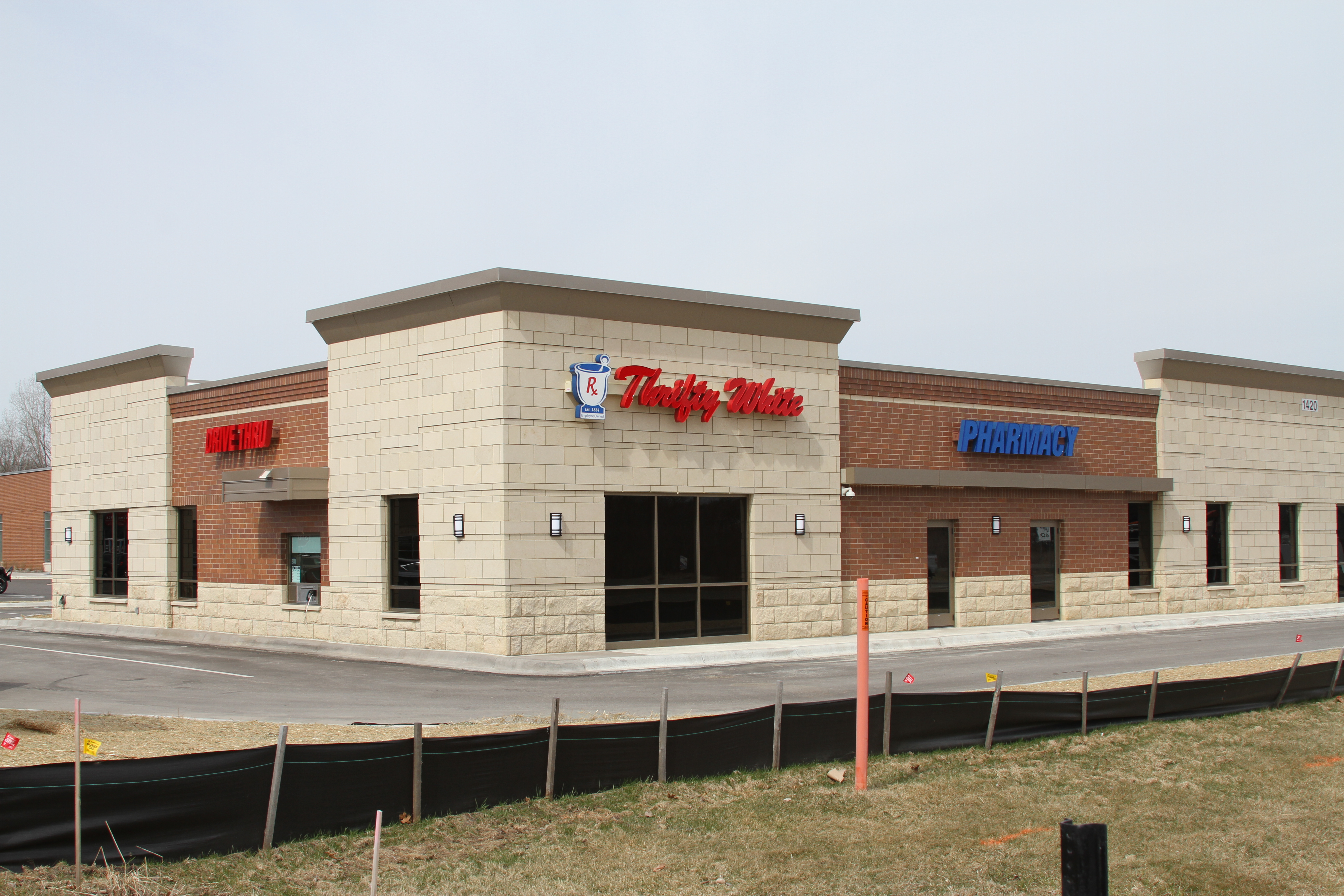
The 11,000 SF building is the new home for Forest Lake businesses Thrifty White Pharmacy and Maplewood Oral and Maxillofacial Surgery. The new location puts Thrifty White Pharmacy’s new condensed store model on display as well as providing a drive-thru option for customer convenience. Maplewood Oral was able to increase the square footage of their business by more than double from the company’s previous Forest Lake location.
Stay tuned for updates as the City Center Commons project commences with the completion of building two. The 8,000 SF building will be the new home of Keller Williams and is slated to be completed early Summer 2016.
City Center Commons Construction Update
Ground broke on Gaughan Construction’s City Center Commons project in mid-August. It is the first ground up construction project for the company in almost a decade. In the past few weeks, significant progress has been made on the exteriors of both buildings.
The buildings will serve as new locations for local businesses Keller Williams, Thrifty White, and Maplewood Oral and Maxillofacial Surgery here in Forest Lake. Along with the recently built Forest Lake City Center, the City Center Commons project will provide a fresh, updated look to the south end of town along Highway 61. The new locations should be open for business in early 2016.
Below are several of aerial pictures of the ground up construction we would like to share.
